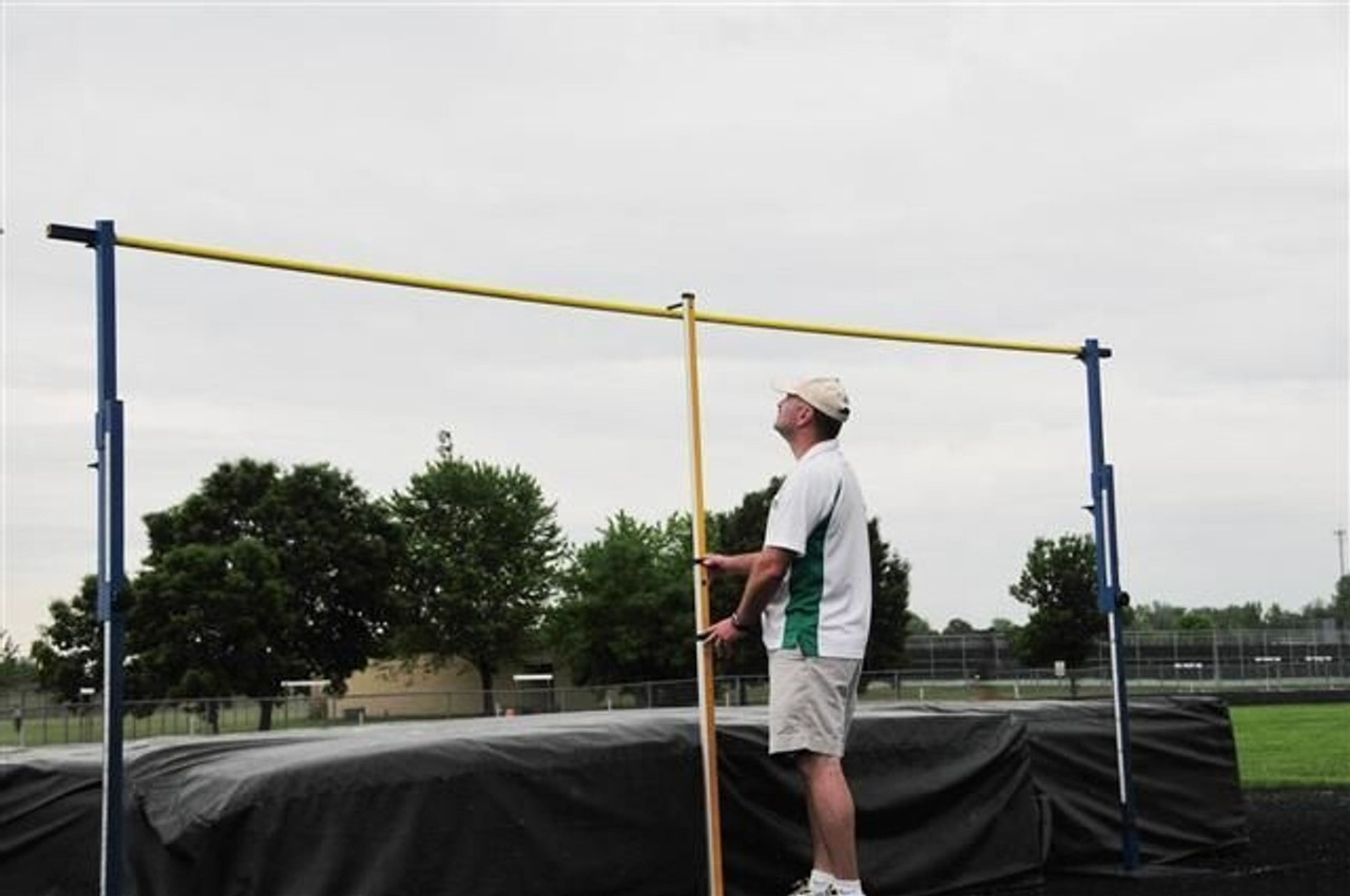Pole Vault Pole Relativity Calculator: For Making Pole Changes
Discover the Pole Vault Pole Relativity Calculator, a tool to optimize your pole selection for peak performance and safety.
Pole Vault Relative Stiffness Calculator
Congratulations on Finding Your Optimal Pole!
You’ve just used the Pole Vault Pole Relativity Calculator and discovered a range of poles tailored to your specifications. Whether you’re preparing for a big competition, refining your technique, or advancing in training, the right pole makes all the difference. But what does it all mean? Let’s break down the science and logic behind the calculator and how it can elevate your performance.
Why Proper Pole Selection Matters
Selecting the correct pole isn't just about clearing the bar—it’s about maintaining safety and optimizing energy transfer. Using a pole with an appropriate weight rating, stiffness, and length ensures you can perform at your best while minimizing injury risk.
Key Factors to Consider
1. Athlete Weight: The pole’s weight rating must match or exceed your weight for safety.
2. Pole Stiffness and Length: The pole’s ability to flex and store energy is determined by these attributes.
3. Grip Height: Adjusting your grip impacts how the pole bends, influencing energy transfer and jump height.
---
The Science Behind Pole Relativity and Energy Transfer
Understanding Pole Relativity
The calculator operates on the concept of pole relativity—how minor adjustments in stiffness and length affect performance. By providing a baseline “Reference Pole,” you can see how different configurations influence your vault.
Energy Input and Resistance
As detailed in the Wisconsin Coaches Clinic, your run-up speed and take-off generate kinetic energy, which the pole stores and releases as potential energy. Pole stiffness and length determine how much energy is converted into vertical lift.
Pole Speed and Take-Off Angle
Proper pole speed and take-off angle maximize energy transfer and ensure a controlled vault, landing you in the Preferred Landing Zone (PLZ).
---
How the Calculator Works
Inputs and Variables
- Athlete Weight: Entering your weight ensures recommended poles meet safety standards.
- Pole Length and Grip Adjustments: Experiment with different lengths and grip heights to see their effects on stiffness.
- Pole Weight Rating: This represents the pole’s relative stiffness and performance characteristics.
Calculation Logic
The calculator uses your inputs to create a grid of relative poles, showing how changes in stiffness and length affect performance. The “Reference Pole” acts as a baseline for comparison.
---
Practical Applications for Athletes and Coaches
Training Progressions
Gradually increase pole stiffness and length as your strength and technique improve. The calculator helps you plan a safe and effective training progression.
Real-World Scenarios
Whether facing a headwind, transitioning from indoor to outdoor, or adjusting for competition stress, the calculator assists in finding the best pole for your needs.
---
Safety Considerations and Common Mistakes
Proper Grip Height
Gripping too high can make the pole feel stiffer, while gripping too low reduces its energy transfer capabilities. Use the calculator to explore optimal grip heights safely.
Adjusting Pole Stiffness
Always make small, gradual adjustments to minimize injury risks. The calculator helps ensure you don’t take unnecessary risks.
Professional Guidance
While the calculator is an excellent resource, seeking advice from an experienced coach is invaluable.
---
Foundational Skills and Historical Insights from the Wisconsin Clinic
Grip Selection and Pole Carry
The clinic emphasized proper grip height and pole carry mechanics. Implementing these basics is crucial for a successful vault.
The Pole Plant and Take-Off
Correct pole planting ensures maximum energy transfer. This foundational skill, highlighted in the clinic, lays the groundwork for successful vaults.
---
Step-by-Step Guide to Using the Calculator
1. Enter Your Inputs: Start with your weight, desired pole length, and weight rating.
2. Review the Output: The calculator provides various pole options with different stiffness and length configurations.
3. Experiment and Compare: Test different scenarios to find the best option for your training or competition needs.
---
FAQs and Troubleshooting
Common Questions
Q: What if the pole feels too stiff?
A: Consider reducing the grip height or switching to a pole with a lower stiffness rating.
Q: Can I use this tool for competition planning?
A: Yes! Use the calculator to find the best pole configurations for different conditions.
Troubleshooting Tips
Ensure accurate input values to get the most reliable results.
---
Conclusion
Why Understanding Pole Relativity Matters
Optimizing pole selection using the right stiffness, length, and grip height can transform your vaulting performance. By leveraging the Pole Vault Pole Relativity Calculator, you can reach new heights safely and effectively.
Call to Action
Try the calculator again, share it with your coach, and prioritize safety in every jump.
Final Thoughts
The right pole, combined with proper technique, can help you achieve new personal bests. Continue refining your pole selection strategy and never stop learning.









